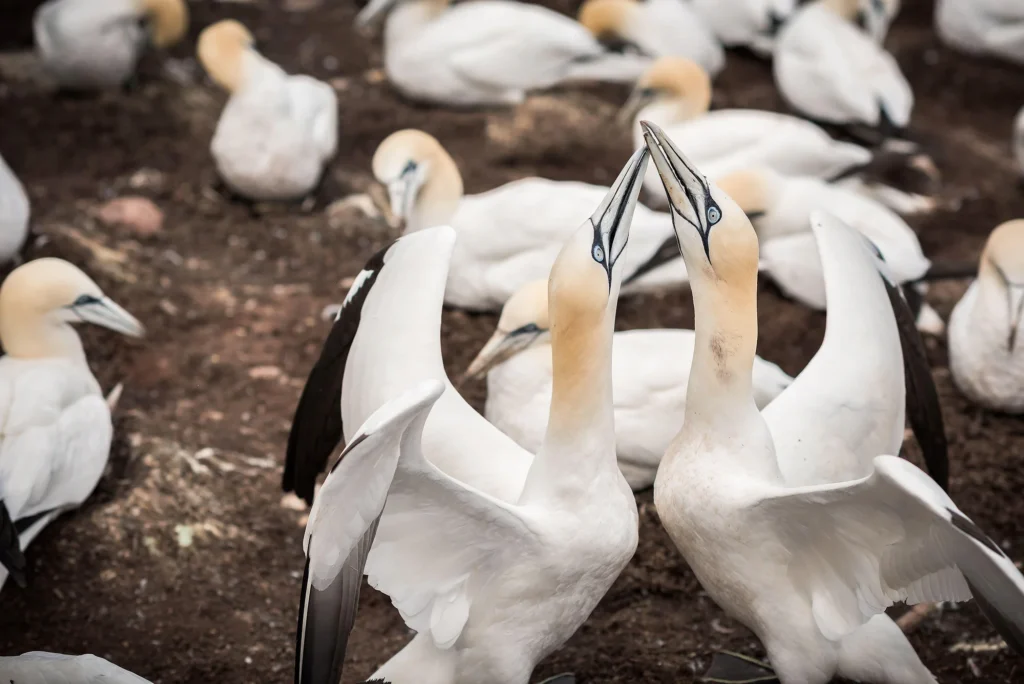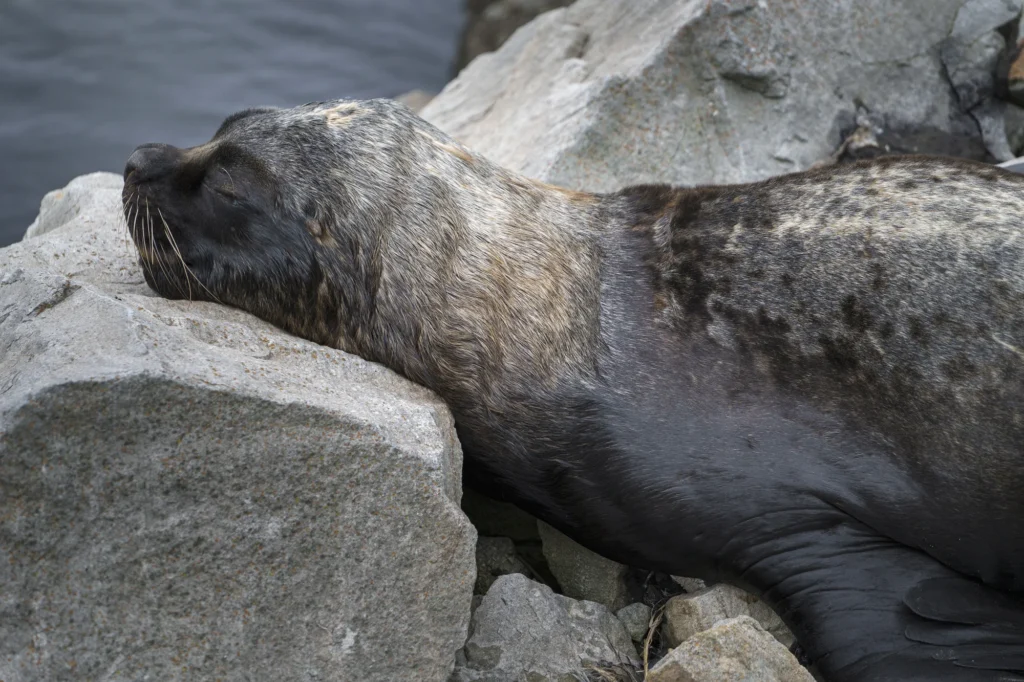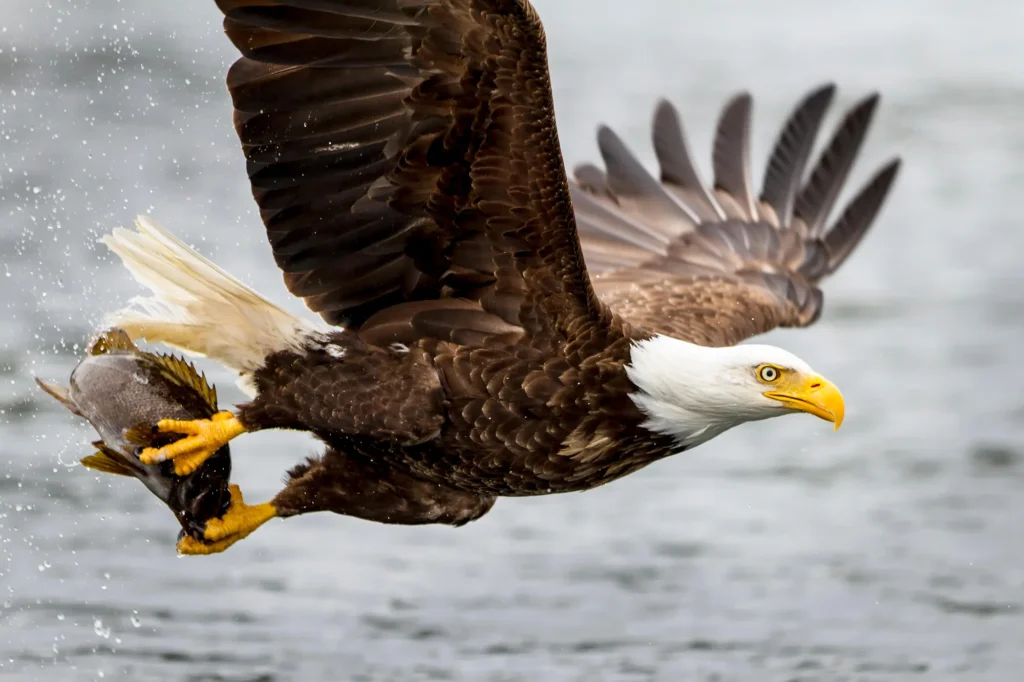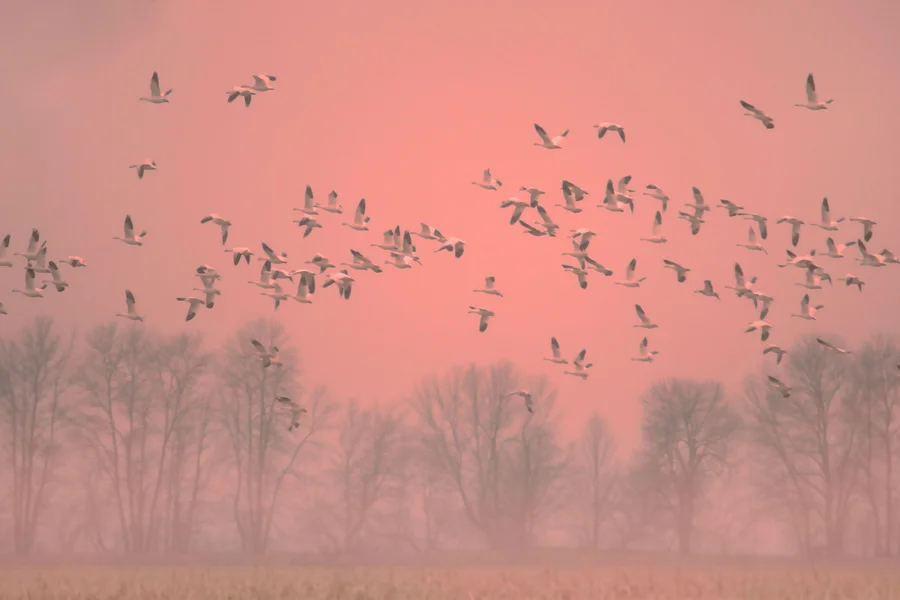Bird flu fears have focused on the poultry and dairy industries and human health. But wild animals are threatened, too—at scales no one fully understands
25,669 Northern Gannets in Canada.
134 harbor and gray seals along the coast of Maine.
21 California Condors in the western U.S.
These are just a few of the countless wild victims of a deadly strain of highly pathogenic avian influenza—commonly known as bird flu. The virus, H5N1, has spread rapidly across the globe in recent years, surprising and horrifying scientists at nearly every turn. While much public attention has focused on rising egg prices, viruses in milk, and pandemic fears in humans, a staggering number of wild animals are dying almost entirely unnoticed—so many that even the limited tallies scientists can gather are overwhelmingly large.
From reports of dead birds, conservation scientist Stephanie Avery-Gomm and her colleagues estimated that, over just six months, avian influenza killed 25,669 of Canada’s 213,704 breeding Northern Gannets—literally decimating the population. Across all species, they calculated more than 40,000 wild bird deaths during the regional outbreak. Common Murres were also hit hard, with over 8,000 dead. “I don’t think anything could have really prepared us for this mass mortality event,” Avery-Gomm says.
“It’s easier to treat the numbers as just numbers and not think too hard about what they really represent,” she adds. “But if you do take that time to think about it, it’s pretty sad.”
She witnessed the devastation firsthand in early 2022, soon after the lethal strain reached North America. Northern Gannets, seabirds that spend most of the year at sea and breed in six colonies in eastern Canada, began washing up dead on beaches. Hundreds of their large, white bodies littered the shore. Scientists couldn’t identify the source, so they sent a helicopter to fly over the region’s largest breeding colony. The footage it captured still brings Avery-Gomm to tears.
“It showed absolute devastation,” she says. “Just so many dead gannets.”
But the true impact was even more painful. Scientists have long known that the number of visible bird flu deaths doesn’t reflect the full toll—especially at sea, where casualties often go unobserved. Since the outbreak began, breeding colonies have seen a sharp decline. Tallies at the largest Common Murre breeding site are down 9 percent; for Northern Gannets, the drop is closer to 40 percent. “We have a lot fewer gannets in North America than we did in 2021,” Avery-Gomm says quietly.
A Whole New Bird Flu
Today, at least 406 wild bird species and 51 wild mammal species globally have been infected. Australia remains the only continent still free of the virus.
As it spreads, the virus has devastated some populations while sparing others. “What’s emerged is just this really complex picture,” says raptor ecologist Brian Millsap. “It flares up in a place out of the blue and then fades away… then it pops up somewhere else.”
The Hidden Death Toll
- 17,400 southern elephant seal pups in Argentina.
- 2,286 Dalmatian Pelicans in Greece.
- 24,463 Cape Cormorants in South Africa.
These figures offer glimpses of the virus’s devastating path. But for most of the world, the scale of these deaths remains invisible.
“This is a massive event, but I think it’s pretty much invisible,” says veterinarian Marcela Uhart. She watched in horror as the virus swept through a massive breeding colony of southern elephant seals in Argentina in late 2023. Of that year’s pups, 96 percent—around 17,400 animals—died. Even a few adults, rarely affected, succumbed to the virus. The news only got worse. In late 2024, only one-third as many adult females returned to the colony’s most populated beaches. “Instead of seeing long lines of animals and hearing their vocalizations,” says conservationist Claudio Campagna, “it was a silent beach with a few animals—and that’s it.”
Campagna believes many adult elephant seals died at sea, out of sight. He and Uhart modeled the population’s possible recovery: it could take a century to return to 2022 numbers.
Not All Species Are Equally Threatened
In the U.S., many bird flu-infected mammals have been common species—red foxes, coyotes, raccoons—which raises less alarm. But others, like Bald Eagles, have been hit harder.
Between January and June 2022, 136 dead Bald Eagles across 24 states were confirmed to have avian influenza. “The reports of devastation were sobering and daunting,” says researcher Rebecca Poulson. In Minnesota’s Voyageurs National Park—once an “eagle nirvana”—only four chicks were found last year. “Two-thirds of nesting pairs are gone,” says ecologist Bill Bowerman. “It may take three decades for them to recover.”
The Limits of What We Know

- 5,500 Peruvian Pelicans.
- 600 Arctic Tern chicks in the U.K.
- At least one walrus—possibly six—in the Norwegian Arctic.
And these are just the deaths we can count. “A lot of mortality happens where no one sees it,” says Poulson. Most wildlife goes unmonitored. Only places like Voyageurs or long-term projects like Bowerman’s offer reliable data. “We don’t know, and we may not have a mechanism to really know unless it’s hugely catastrophic,” says Millsap.
One bright spot is the tracking of Snow Geese, thanks to hunter reporting programs. While limited by pandemic disruptions, the system gives scientists clues when deaths spike. “You can’t build these monitoring programs in just a few years,” says biologist Frank Baldwin. “Their value is in their long-term nature.”

Ecosystems in Flux
- 1,621 Caspian Terns in Washington.
- 3,500 northern fur seals in Russia.
- A polar bear in Alaska.
Mass die-offs ripple through entire ecosystems. In Argentina, elephant seal social structures have collapsed. In Canada, fewer gannets could allow fish like herring and mackerel to grow unchecked. Nutrients they once returned to land now go missing.
Then there are the carcasses. Overwhelmed scavengers—like Black Vultures and raccoons—are themselves becoming infected. “These are sentinel species,” says ecologist Johanna Harvey. “They reveal how much virus is really out there.”
In places like Antarctica, the situation may grow worse. Scavengers like Brown Skuas are dying too, leaving no one to clean up the dead. “The virus might just stay there,” says Uhart. “Carcasses will be everywhere.”

Will Bird Flu Cause Extinctions?
It’s too soon to say—but the risk is real. One in six infected bird species and a quarter of infected mammals are already considered near threatened or worse. The California Condor lost 21 of fewer than 600 birds before emergency vaccines were ready.
Uhart fears the virus reaching Hawaiian monk seals, with just 1,600 left. Others worry about albatrosses, one of the most endangered bird groups on Earth.
“There are so many species already in decline,” says Harvey. “This is just an additional stressor they didn’t need.”
A Glimmer of Hope
Some infected animals are surviving—and showing signs of immunity. “There’s good evidence they can mount an immune response,” says Poulson. It’s unclear how long it lasts, but it’s a rare piece of good news.
Still, new cases appear constantly: a ground squirrel and a cottontail in Arizona, foxes in Colorado and New York, vultures in South Carolina, eiders in Maine, and stilts in Arizona.
These numbers?
They add up.
